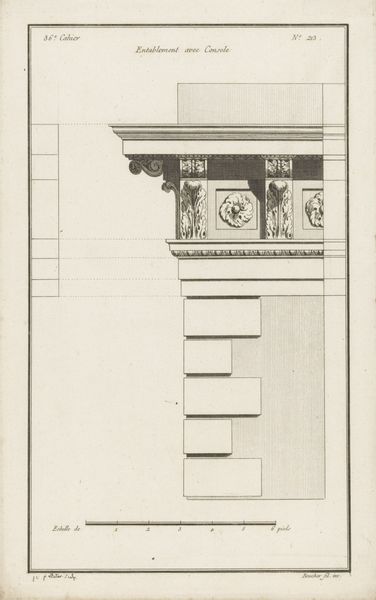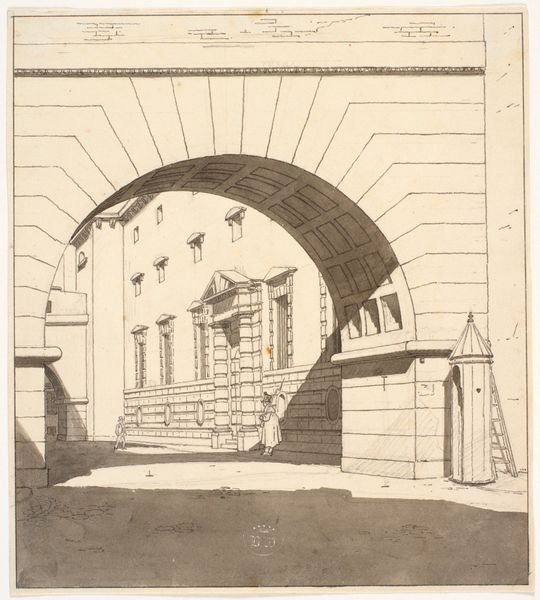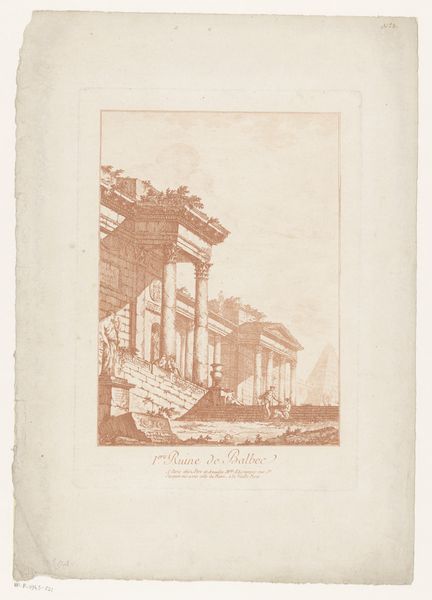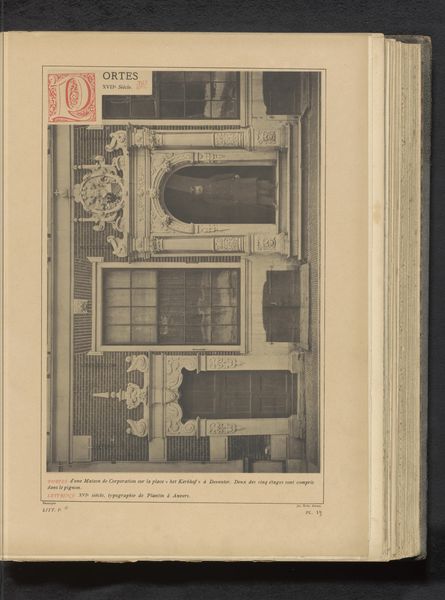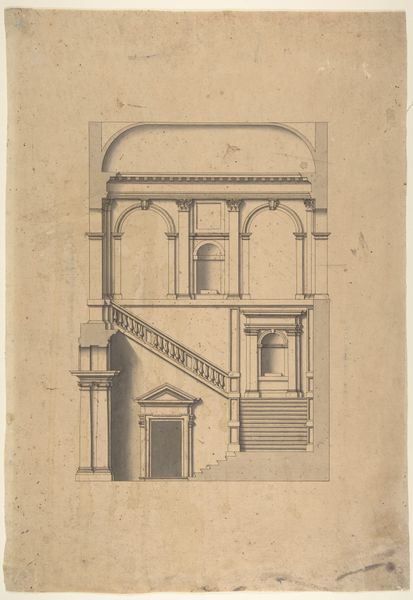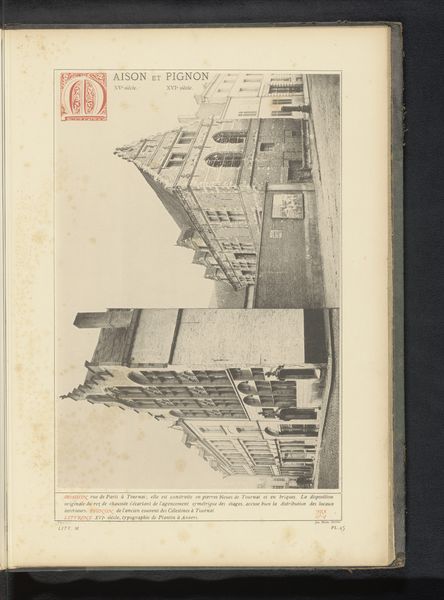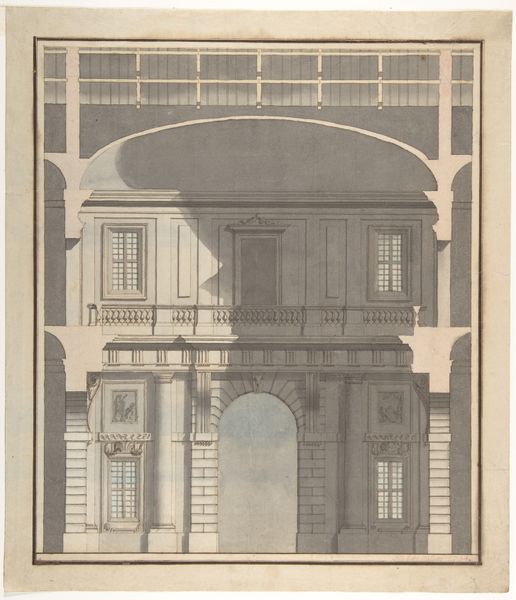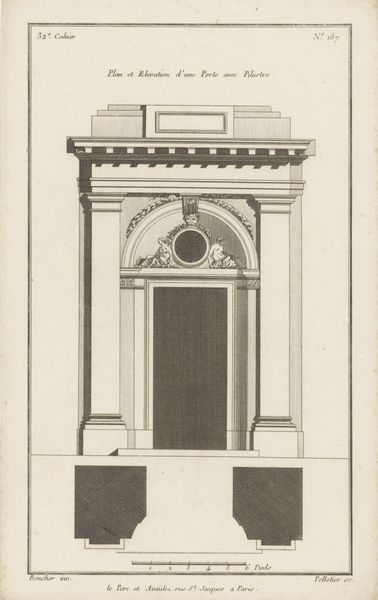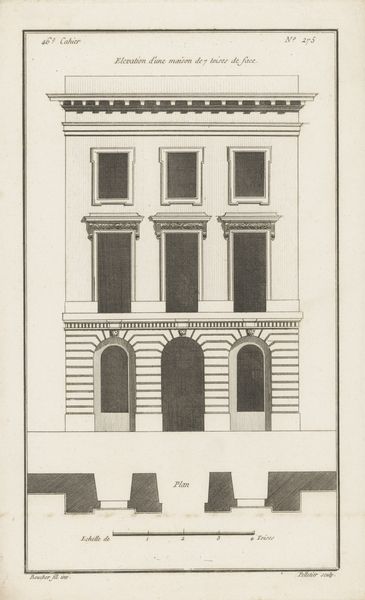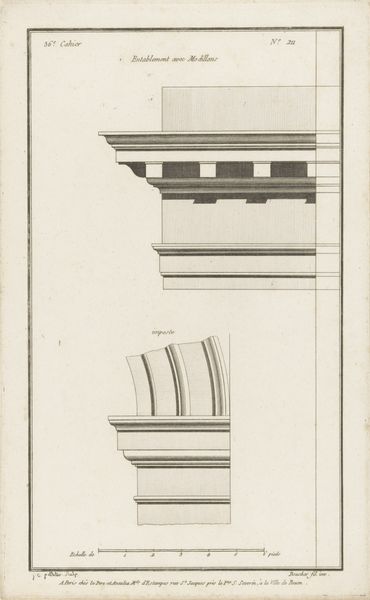
Elevation and Section of a Columbarium 1710 - 1727
0:00
0:00
drawing, print, paper, ink, architecture
#
drawing
# print
#
paper
#
ink
#
ancient-mediterranean
#
architecture
Dimensions: Overall: 21 5/8 x 13 1/16in. (55 x 33.2cm)
Copyright: Public Domain
Curator: This meticulously rendered drawing presents an elevation and section of a Columbarium. Pietro Paolo Coccetti, or Cocchetti, completed this work between 1710 and 1727, using ink on paper. Editor: Its graphic clarity immediately strikes me. The monochrome palette is austere but reveals a lot about the materials used to design the Columbarium. What scale do you estimate this structure to be? Curator: Considering Coccetti was an architectural designer, this plan provides us insight into ancient burial practices, as well as the architectural organization of space dedicated to communal remembrance. The crisp lines define forms and volumes, a classical language of architectural representation. Editor: Precisely. One notices the evident contrast between the monumentality conveyed and the relatively humble nature of its making—ink on paper. A clear social context also presents itself through names inscribed in the stones. A material investigation into who built it, from where the stones were quarried, how the ink was created, and how labor informed its construction can further contextualize the design. Curator: It brings together rational design and, indeed, cultural values around commemoration of the deceased, through formal inscriptions. This interplay between the geometric shapes—arches and rectangles—and their patterned distribution creates a visual rhythm which resonates on multiple symbolic registers, marking spatial as well as social order. Editor: And that order itself has its material grounding. The organization of the spaces surely reflects a careful allocation of resources and manpower. These processes and the ways the space and materials would be encountered socially, are deeply related. I do wonder what pigments might be available in Cocchetti's day, and why he chose to create the study only with monochromatic inks. Curator: These details elevate our appreciation of the artwork not only as a record, but also an interpretation of funerary architecture. Editor: Exactly, a study of death becomes such a lively site.
Comments
No comments
Be the first to comment and join the conversation on the ultimate creative platform.
